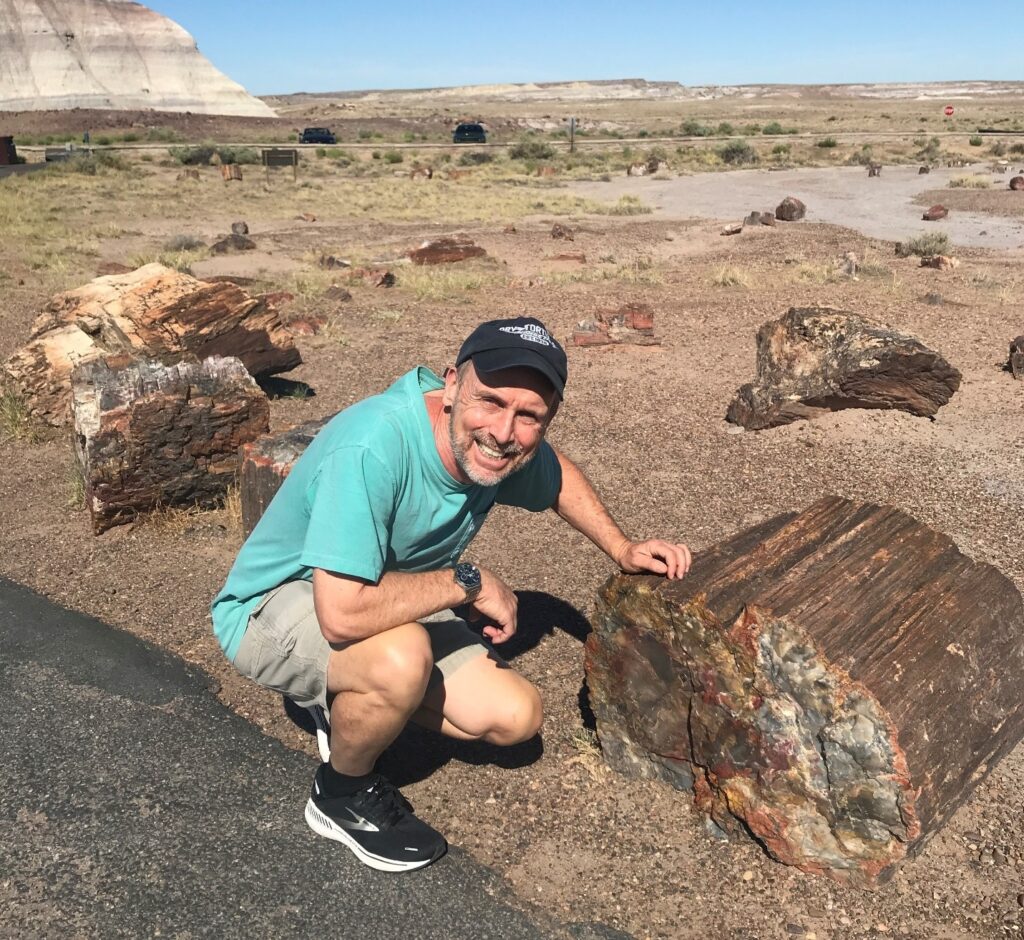
In the novel Voyage to Blackbeard’s Island, petrified wood plays an interesting part. I won’t spoil the plot by explaining more than that, but I’ll tell you about the fascinating process of petrifying wood.
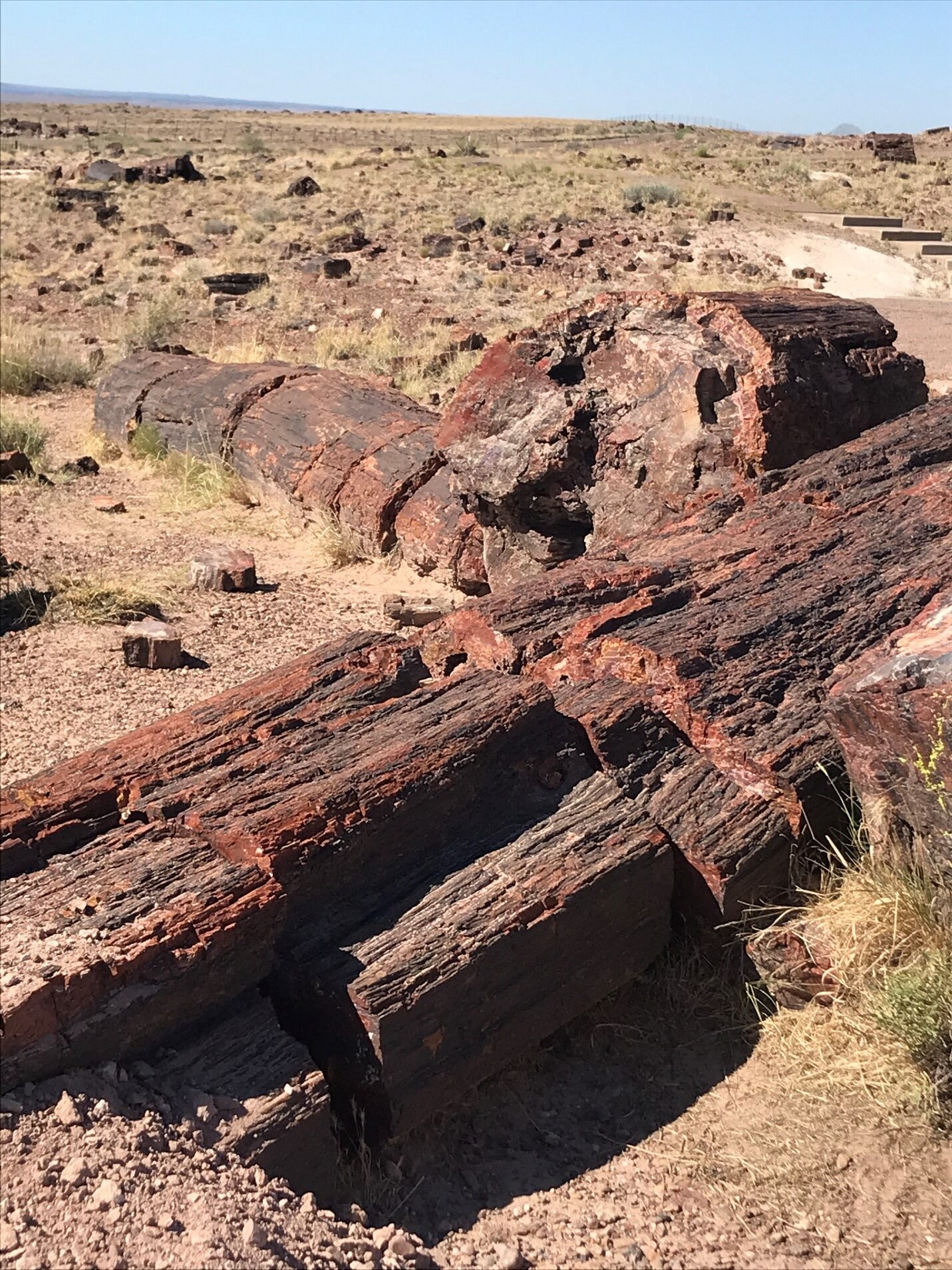
Petrified wood is actually a fossil. Plants are mostly water (which is why burning fresh cut wood is so difficult) and even the hardest wood is no exception. Flash bury that wood in sediment so it doesn’t decay, and it becomes ripe for fossilization. Groundwater rich in minerals replaces the natural water and elements in the tree with silica, calcite, pyrite, or another inorganic material such as opal. What you get when you’re finished is the tree transformed into an exact mineral duplicate.
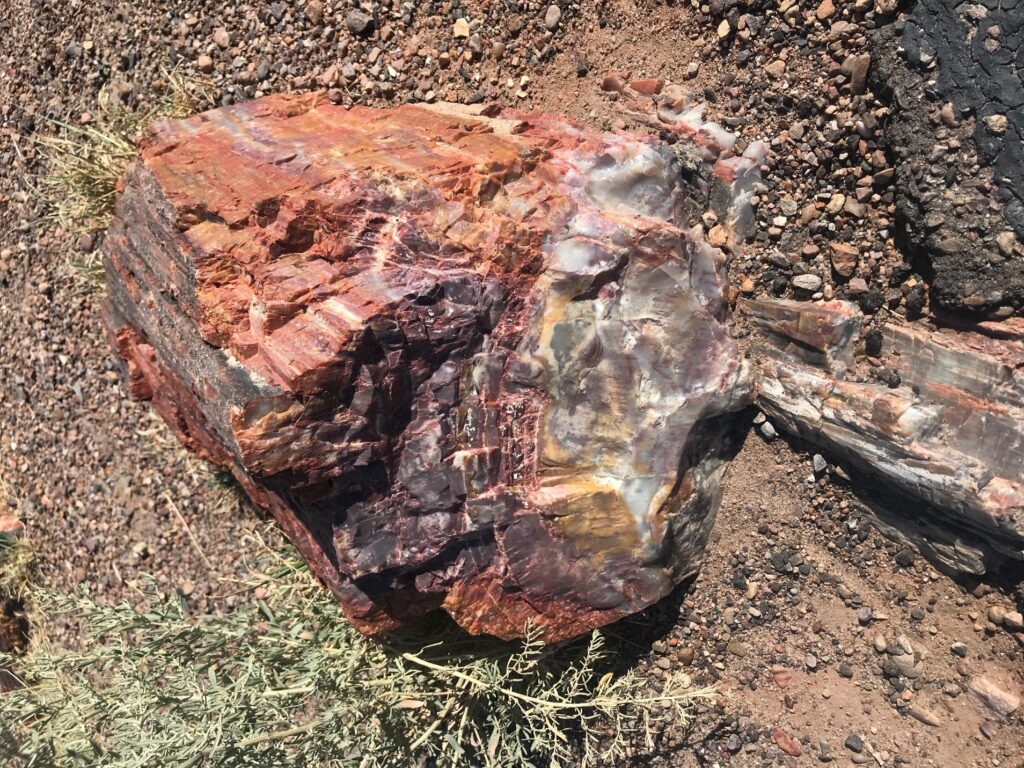
And what a beautiful duplicate that can be. Depending on the minerals absorbed, the fossil can present a rainbow of reds, blues, and greens. The best examples include exquisite wood grain and such perfect copies of the bark that the tree species can be identified. The major difference between the real thing and the fossil it spawned is weight. A log of petrified wood is tombstone-level heavy.
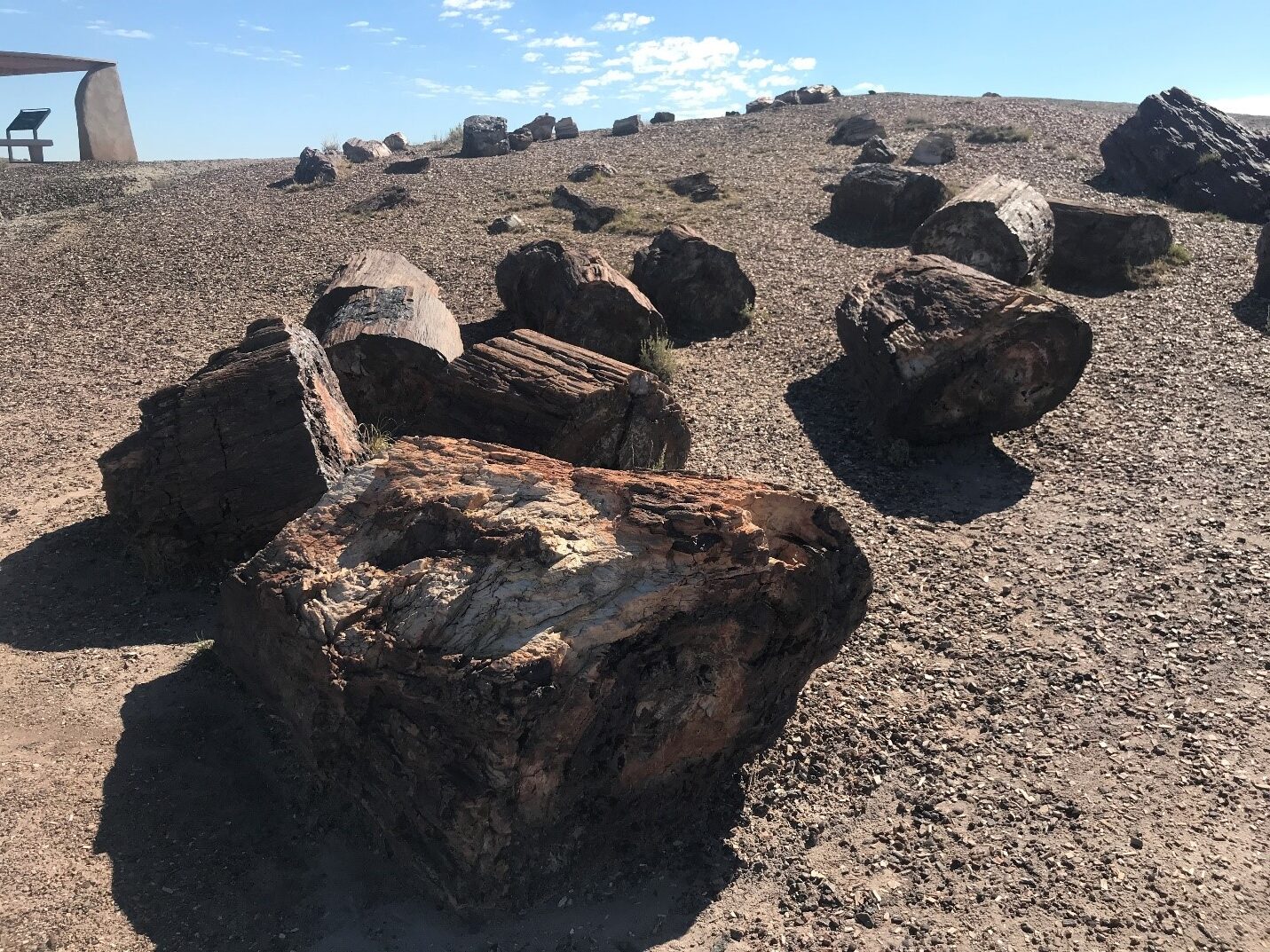
Possibly the best place to see petrified wood is Petrified Forest National Park in New Mexico. I visited there on the way to Mad Monster Party con in Phoenix one year. Here a forest was covered in volcanic ash after a volcanic eruption. The wood petrified over centuries, then upheavals brought that area back to the surface. The softer stone around the petrified wood washed away, and left an explosion of felled stone trees behind. This place is easy to get to from the interstate and well worth a visit.
Petrified wood is more common than you might think. These are pictures I took of the Petrified Tree in Yellowstone National Park. A century of people souvenir hunting bits of it has reduced its size and required a protective fence around its perimeter. In this example, the minerals made the stone white.
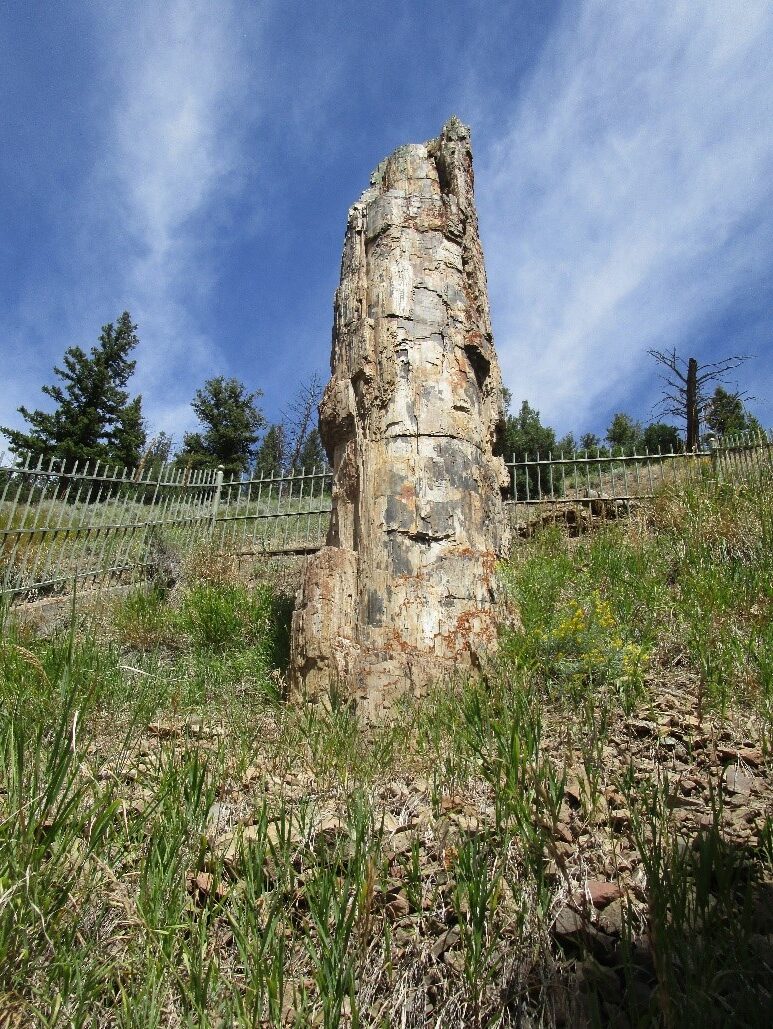
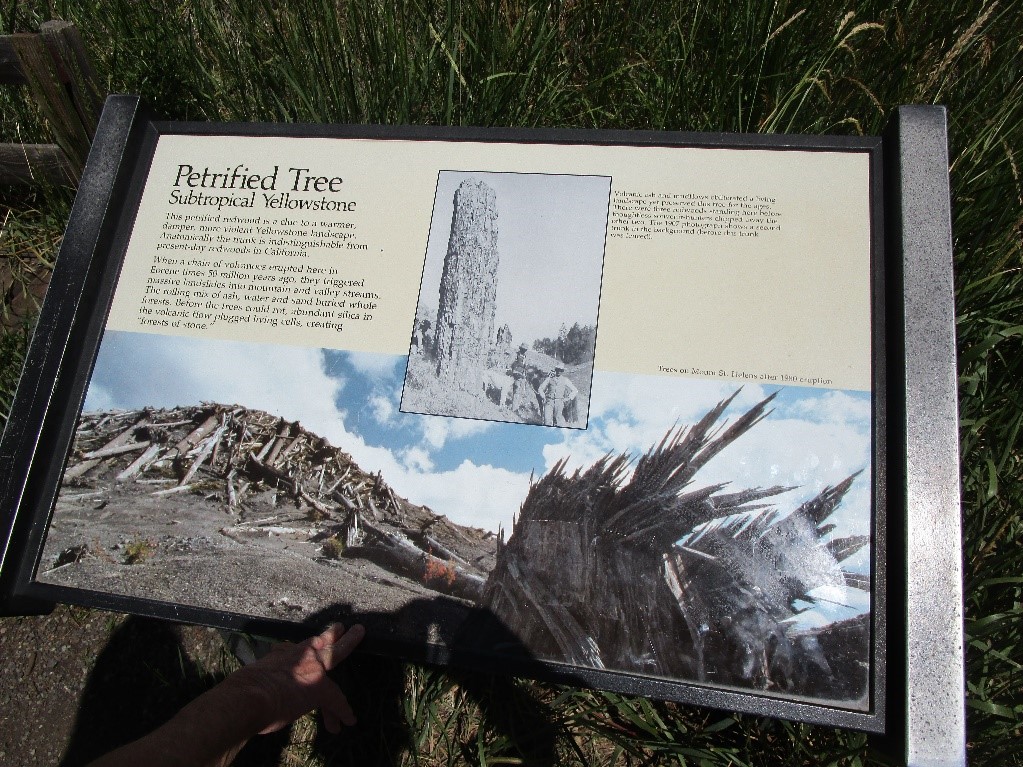
There are probably some examples close to you at one of these locations:
- Petrified Forest National Park near Holbrook, Arizona
- Petrified Palm Deposits in the Catahoula Formation of Louisiana, Texas and Mississippi
- Ginkgo Petrified Forest near Wanapum Reservoir, Washington
- The Petrified Forest near Calistoga, California
- Mississippi Petrified Forest near Flora, Mississippi
- The Gilboa Fossils near Gilboa, New York
- Florissant Fossil Beds near Florissant, Colorado
- Gallatin Petrified Forest near Yellowstone, Wyoming
- Escalante Petrified Forest State Park near Escalante, Utah
- Petrified Wood Park in Lemmon, South Dakota (a rock sculpture park – some made of local petrified wood)
- Blue Forest near Eden Valley, Wyoming
In Voyage to Blackbeard’s Island, antiques store owners Rick and Rose Sinclair set out to follow what they believe to be a map to where the pirate Blackbeard buried his personal treasure. It turns out they aren’t the only ones after it, and that Blackbeard employed some serious witchcraft to defend his treasure. It’s a non-stop adventure right to the final chapter.
Petrified wood works into the plot of Voyage to Blackbeard’s Island and I think I’ve included enough of the elements above available to make it plausible. It definitely adds something interesting to the story. You’ll have to check out the story and let me know. You can get a copy of the book right here on Amazon in paperback or on Kindle or anywhere you buy your books.

